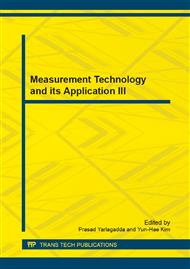[1]
S. D. Bekiros, A. Paccagnini: Bayesian forecasting with small and medium scale factor-augmented vector autoregressive DSGE models, Computational Statistics & Data Analysis, Vol. 71 (2014), pp.298-323.
DOI: 10.1016/j.csda.2013.09.018
Google Scholar
[2]
A. Kurmaş, S. Başer, M. G. Chadwick: Short-term inflation forecasting models for Turkey and a forecast combination analysis, Economic Modelling, Vol. 33 (2013), pp.312-325.
DOI: 10.1016/j.econmod.2013.04.001
Google Scholar
[3]
K. Boudt, J. Daníelsson, S. Laurent: Robust forecasting of dynamic conditional correlation GARCH models, International Journal of Forecasting, Vol. 29 (2013), pp.244-257.
DOI: 10.1016/j.ijforecast.2012.06.003
Google Scholar
[4]
L. F. Pau: A controlled linearized kalman filter for economic forecasting and adaptive modeling, Automatica, Vol. 14 (1978), pp.119-128.
DOI: 10.1016/0005-1098(78)90016-x
Google Scholar
[5]
K. H. Kim: Density forecasting through disaggregation, International Journal of Forecasting, Vol. 27 (2011), pp.394-412.
DOI: 10.1016/j.ijforecast.2010.04.007
Google Scholar
[6]
J. H. Stock, M. W. Watson: Forecasting with Many Predictors, Handbook of Economic Forecasting, Vol. 1 (2006), pp.515-554.
DOI: 10.1016/s1574-0706(05)01010-4
Google Scholar
[7]
M. P. Clements, D. F. Hendry: Forecasting with Breaks, Handbook of Economic Forecasting, Vol. 1 (2006), pp.605-657.
DOI: 10.1016/s1574-0706(05)01012-8
Google Scholar
[8]
E. M. H. Lin, C. W. S. Chen, R. Gerlach: Forecasting volatility with asymmetric smooth transition dynamic range models, International Journal of Forecasting, Vol. 28 (2012), pp.384-399.
DOI: 10.1016/j.ijforecast.2011.09.002
Google Scholar
[9]
M. P. Clements, D. F. Hendry: Forecasting Annual UK Inflation Using an Econometric Model over 1875–1991, Frontiers of Economics and Globalization, Vol. 3 (2008), pp.3-39.
DOI: 10.1016/s1574-8715(07)00201-1
Google Scholar
[10]
S. Laurent, J. V. K. Rombouts, F. Violante: On loss functions and ranking forecasting performances of multivariate volatility models, Journal of Econometrics, Vol. 173 (2013), pp.1-10.
DOI: 10.1016/j.jeconom.2012.08.004
Google Scholar
[11]
X. Luo, H. Han, J. E. Zhang: Forecasting the term structure of Chinese Treasury yields, Pacific-Basin Finance Journal, Vol. 20 (2012), pp.639-659.
DOI: 10.1016/j.pacfin.2012.02.002
Google Scholar
[12]
G. Cubadda, B. Guardabascio: A medium-N approach to macroeconomic forecasting, Economic Modelling, Vol. 29 (2012), pp.1099-1105.
DOI: 10.1016/j.econmod.2012.03.027
Google Scholar


